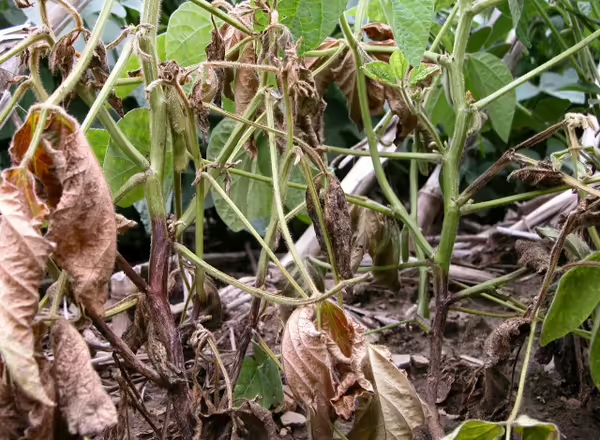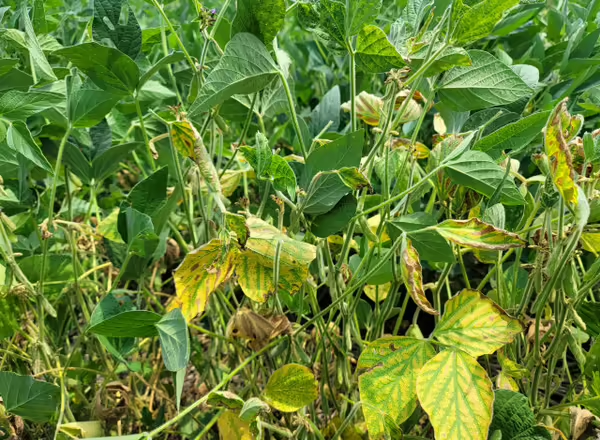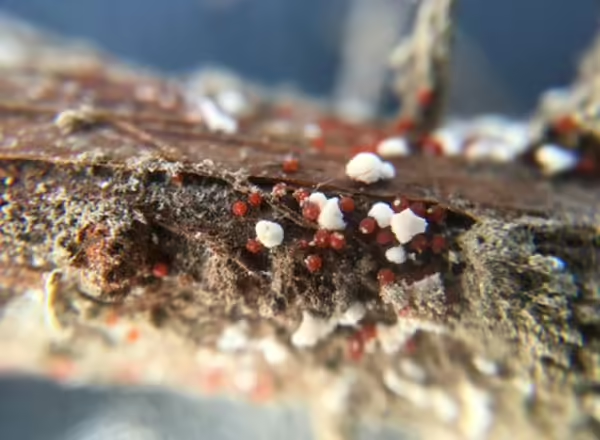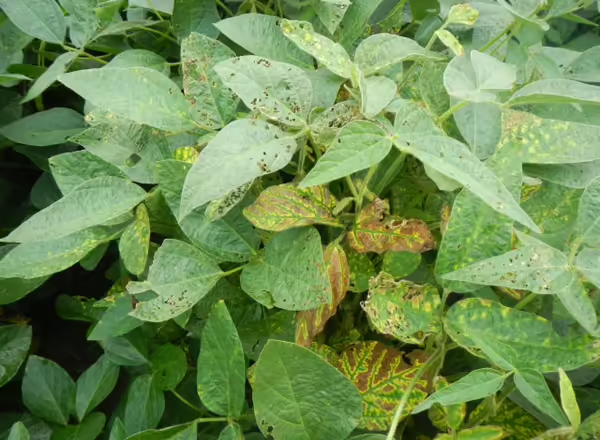
After a wet spring and early summer, corn and soybean fields across central Illinois are entering critical reproductive stages—and so is the risk of crop disease. While the plants may look healthy from the road, conditions are ripe for several fungal and soilborne pathogens to take hold, often before symptoms are visible. For farmers, this is the time when yield potential is at stake. For anyone connected to agriculture—whether you're in the field, advising growers, or simply following the season—understanding what’s happening below the canopy is key. This post highlights three common soybean diseases to watch for right now, along with practical scouting tips to help you stay ahead of the curve. With timely action, there’s still a strong opportunity to protect your crop and your bottom line.
Phytophthora Root and Stem Rot is caused by Phytophthora sojae, which is not a fungus, but a genus of oomycetes closely related to algae. This disease can impact soybean fields at any point in the growth stage from planting all the way to maturity. No-till soybean fields, poorly drained fields, and fields prone to flooding are most susceptible to Phytophthora. The oospores that contain Phytophthora can overwinter in the soil or on crop residue from previous growing seasons. Infection begins in the roots of soils that are warm and saturated, where the pathogen takes over the entire root system and the stem. The primary symptom in infected plants is wilting and dying off, with a darker-colored lesion that extends from the taproot up the stem of the plant. The lesion can spread to several nodes on the plant, restricting the flow of nutrients and water to the rest of the plant. The best defense against Phytophthora is picking resistant varieties, with fungicide-treated seeds offering some protection. Improving soil drainage is also important in managing this disease, since it thrives in wet conditions.
Red Crown Rot is a relatively new disease in Midwest soybean fields, caused by the fungus Calonectria illicicola. Like many other fungi that can cause crop diseases, this fungus can overwinter in crop residue and survive for several years, waiting for a suitable host. Wind and equipment can help spread the spores across a field. This disease emerges once the plant has reached the R3 stage and is most prevalent in poorly drained and low-lying areas of a field. Plants in the R3 stage that are exposed to hot temperatures and moist soils can be ideal hosts and victims of Red Crown Rot. Early symptoms of this disease are mainly yellowish spots in between the leaf veins, which can quickly develop into interveinal necrosis (tissue between leaf veins dies and turns brown, while veins remain green). In addition to the foliar symptoms, the stems of infected plants will exhibit a reddish coloration on the lower parts. After periods of excess moisture, small red spores can be seen on those same areas of the stem. Cultural practices are the most effective way to protect against Red Crown Rot, as the fungus can overwinter on crop residue for extended periods. Crop rotation is the best practice. Waiting two years between soybean crops can reduce the likelihood of spores surviving. Additionally, improving drainage in low-lying areas can eliminate the favorable environment for development and infection.
Sudden Death Syndrome is a disease all too familiar to soybean producers in the Midwest and across the United States. According to the Soybean Research and Information Network, Sudden Death Syndrome is one of the leading causes of yield reduction annually. The disease is caused by the fungus Fusarium virguliforme, which can survive and overwinter in both soybean and corn residue. Spores can be spread by wind, equipment, and animals. This fungus can infect seeds in the germination stage, but not show any symptoms until the plant reaches the reproductive stages. Once a seed has germinated and roots begin to develop, the fungus will infect the roots. Plants in cool, wet soils can be more vulnerable to infection. Once the plant reaches the reproductive stage, the fungus releases a toxin that moves into the leaves. The symptoms of Sudden Death Syndrome are similar to other diseases, making a diagnosis difficult. Foliar symptoms of an infected plant are easy to spot and are much like Red Crown Rot. Yellowish spots will develop between leaf veins and eventually turn brown and die, while the veins remain green. These symptoms are usually more present in the upper canopy, and can even cause pods to not fill, and flowers to abort. The true way of identifying Sudden Death Syndrome is in the roots. The crown of the root will be discolored, and when the stem is split open, the internal tissue will be gray or even brown, and the pith will be white. While fields that have Soybean Cyst Nematodes present can see Sudden Death Syndrome, the disease can be present in fields without the nematodes. Selecting varieties that offer resistant genetics is often the best line of defense against the disease, with foliar fungicides having little to no impact since the fungus lives in the roots. Since the fungus prefers cooler, wetter soils, planting in warmer and drier conditions can prevent infection to some degree.
As soybeans move through its reproductive stages, the stakes are high—and so is the potential for disease to chip away at yield. Phytophthora Root and Stem Rot, Red Crown Rot, and Sudden Death Syndrome are all active threats in central Illinois, especially following a wet start to the season. While symptoms may start small, these diseases can spread quickly under the right conditions. That’s why timely, boots-on-the-ground scouting is one of the most powerful tools you have. Walk your fields, check the canopy, and don’t wait for symptoms to reach the ear leaf before making a management decision. A well-timed fungicide application, guided by what you see in the field, can make all the difference in protecting your crop and your bottom line. If you suspect that a disease is present in your fields, the University of Illinois Plant Clinic can help! Collect a sample and send it in for analysis to know what you are fighting against. Visit their website at the link below to learn more about their services and how to submit a sample.
For additional information, visit the following links:
- University of Illinois Agronomy Handbook (2022)
- Crop Protection Network Disease Forecasting
- University of Illinois Plant Clinic
- Phytophthora Root and Stem Rot
- Red Crown Rot
- Sudden Death Syndrome



